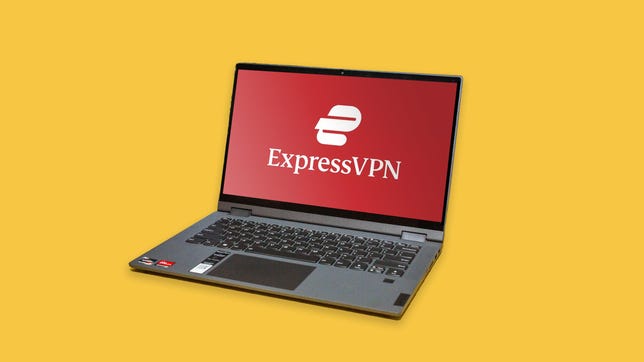Technologies
‘Rabbit Hole’: When and Where to Stream the New Thriller Series
Kiefer Sutherland returns to the spy genre in a gritty new TV show.

Where there is subterfuge and espionage involved, you can usually count on Kiefer Sutherland showing up as a stressed-out but sharp-witted character. Jack Bauer fans who have missed the star in 24 can catch him this weekend in Rabbit Hole, an action-packed crime thriller series exclusive to Paramount Plus. If you like seeing Sutherland in spy dramas with a hint of humor, you probably won’t be disappointed.
Sutherland plays a consultant named John Weir, who’s described as a brilliant master manipulator «in the world of corporate espionage.» He’s skilled when it comes to lying, numbers and sociopsychology, but his self-confidence is sometimes shaky. At times, Weir is a rebel who steals from the rich for a just cause. But things go sideways after he’s framed for murder, and Weir’s tendency to distrust others doesn’t help when he’s thrust into the middle of a big conspiracy.
Rabbit Hole also features Game of Thrones‘ Charles Dance as Ben Wilson, a paranoid former CIA operative with expertise in psychology. The series also includes Meta Golding as lawyer Hailey Winton, Enid Graham, Rob Yang, Jason Butler Harner and Walt Klink.
Read on to find out how to watch Rabbit Hole season 1, no matter where you are in the world.
Read more: Best VPN 2023: VPNs Tested and Rated by Our Experts
Release dates for Rabbit Hole
Rabbit will consist of eight episodes for season 1, with new episodes dropping weekly. If you want to watch the new series, it will only be available exclusively on Paramount Plus. You can sign up for an ad-supported or ad-free subscription. There is also a free seven-day trial available.Here’s when Rabbit Hole will be streaming on the platform:
- Stream the first two episodes in the US and Canada on Sunday, March 26. New releases typically drop on the app around 3 a.m. ET (12 a.m. PT).
- For viewers in Latin America, the UK, Australia, Italy, Germany, Switzerland, Austria and France, Paramount Plus releases it on Monday, March 27. According to Paramount, a streaming date for the South Korea release will be shared at a later date.
Read more: Best Streaming Service of 2023: Netflix, HBO Max, Disney Plus and More
Sarah Tew/CNET
Paramount Plus has two main subscription plans: Essential for $5 per month ($50 per year if paying annually) and Premium for $10 per month ($100 per year if paying annually).
The cheaper Essential option has ads for on-demand streaming and lacks live CBS feeds as well as the ability to download shows to watch offline later. Students may qualify for a 25% discount.
How to watch Rabbit Hole from anywhere with a VPN
Perhaps you’re traveling abroad and want to stream Rabbit Hole on Paramount Plus while away from home. With a VPN, you’re able to virtually change your location on your phone, tablet or laptop to get access to the show from anywhere in the world. There are other good reasons to use a VPN for streaming, too.
A VPN is the best way to stop your ISP from throttling your speeds by encrypting your traffic. Using a VPN is also a great idea if you’re traveling and find yourself connected to a Wi-Fi network, and you want to add an extra layer of privacy for your devices and logins. Streaming TV can be a bit smoother with a reliable, quality VPN that’s passed our tests and security standards.
You can use a VPN to stream content legally as long as VPNs are legal in your country and you have a valid subscription to the streaming service you’re using. The US and Canada are among the countries where VPNs are legal, but we advise against streaming or downloading content on illegal torrent sites. We recommend ExpressVPN, but you may opt for another provider from our best VPN list, such as Surfshark or NordVPN.
Sarah Tew/CNET
If you’re looking for a secure and dependable VPN, our Editors’ Choice is ExpressVPN. It’s fast, works on multiple devices and provides stable streams. It’s normally $13 per month, but you can sign up for ExpressVPN and save 49% — the equivalent of $6.67 per month — if you get an annual subscription.
ExpressVPN offers a 30-day money-back guarantee.
Follow the VPN provider’s instructions for installation, and choose a country where Rabbit Hole is streaming on Paramount Plus.Before you open the streaming app, make sure you’re connected to your VPN using your selected region. If you want to stream the TV series on more than one device, it’s possible you’ll need to configure each one to ensure you are signed in. Go to settings and check your network connections to verify you’re logged in and connected to your VPN account. Now you’re ready to open Paramount Plus to stream.
If you run into issues with streaming, first make sure your VPN is up and running on its encrypted IP address. Double-check that you’ve followed installation instructions correctly and you’ve picked the right geographical area for viewing. If you still encounter connection problems, you may need to reboot your device. Close all apps and windows, restart your device and connect to your VPN first. Note that some streaming services have restrictions on VPN access.
Technologies
Give the Gift of Great Sound With Sennheiser Headphones at a 60% Black Friday Discount
The Sennheiser Momentum 4 headphones are now down to a record low price of $179 this Black Friday.

Spending this Black Friday shopping for a holiday gift for an audiophile? With tons of items on sale, there are plenty to chose from. Sennheiser is behind some of the best wireless headphones you can buy, but its headphones can be prohibitively costly.
But for two days only, Woot is running a Black Friday deal that brings the Sennheiser Momentum 4 headphones down to $179 from the original $450 price. The Sennheiser Momentum 4 headphones are for audiophiles who want great quality and comfort. You have to be quick, as this deal ends on Nov. 30, or sooner if supplies run out.
Sennheiser Signature Sound gives you rich, balanced audio, and the companion Smart Control app lets you fine-tune the sound to your liking. Adaptive noise cancellation keeps outside distractions at bay, making these headphones great for work, commuting or just zoning out at home. The battery lasts up to 60 hours at moderate volume, and the voice-calling quality is solid, so you can rely on them for everyday use.
Hey, did you know? CNET Deals texts are free, easy and save you money.
If this style of headphones isn’t your cup of tea, then maybe a pair of the best wireless earbuds will be better suited to your needs. If you’re shopping on a budget, check out our roundups of the best gifts under $100, $50 and $25 to see more great gift-giving ideas.
HEADPHONE DEALS OF THE WEEK
-
$248 (save $152)
-
$170 (save $181)
-
$199 (save $150)
Why this deal matters
This deal surely won’t last. Sennheiser has made a name for itself as one of the best in the audio business, and that’s clear with the Momentum 4 wireless headphones. They offer adaptive noise cancellation, a Bluetooth connection and up to 60 hours of playback. When it comes to comfort and quality, it doesn’t get much better, especially with a discount like this.
Join Our Daily Deals Text Group!
Get hand-picked deals from CNET shopping experts straight to your phone.
By signing up, you confirm you are 16+ and agree to receive recurring marketing messages at the phone number provided. Consent is not a condition of purchase. Reply STOP to unsubscribe. Msg & data rates may apply. View our Privacy Policy and Terms of Use.
Technologies
Samsung’s Galaxy Watch 8 Is Now Just $250 in Multiple Black Friday Sales
The Samsung Galaxy Watch 8 is an even better value with this $100 discount.

The holiday season is here, and while your fitness goals might not be at the front of your mind right now, January is just around the corner. That means resolutions are upon us, so what better time than now to pick up a new smartwatch? You can get your hands on a new Samsung Galaxy Watch 8 while it’s available for a huge $100 off for Black Friday.
Amazon and Best Buy are both selling the Galaxy Watch 8 at the same $250 price. We can’t promise either deal will be around for long.
Samsung’s latest smartwatch packs serious hardware upgrades over it predecessor. It has a vibrant 46mm AMOLED display that shines up to 3,000 nits, along with 2GB of RAM, 64GB of storage, built-in GPS and advanced fitness tools, including sleep coaching and vascular load monitoring. It’s waterproof up to 50 meters and lasts up to 30 hours on a single charge.
CNET expert Vanessa Hand Orellana praised its refined design, detailed health insights and Gemini AI support, noting that it «has nearly every feature I could hope for.» Just remember, some tools work best when paired with the Samsung Galaxy phone.
SMARTWATCH DEALS OF THE WEEK
-
$339 (save $60)
-
$280 (save $70)
-
$300 (save $50)
-
$150 (save $100)
-
$49 (save $30)
Why this deal matters
The Samsung Galaxy Watch 8 packs serious upgrades for the price. With advanced fitness tools, sleep coaching and daily energy tracking, it’s one of the most feature‑rich smartwatches this year. The $250 price represents a new low for the model and includes a 90-day warranty. But with limited stock, it’s a deal worth grabbing quickly.
Join Our Daily Deals Text Group!
Get hand-picked deals from CNET shopping experts straight to your phone.
By signing up, you confirm you are 16+ and agree to receive recurring marketing messages at the phone number provided. Consent is not a condition of purchase. Reply STOP to unsubscribe. Msg & data rates may apply. View our Privacy Policy and Terms of Use.
Technologies
The Black Friday Gaming Deals Are Here. Shop Now and Save Big on PlayStation, Xbox and Alienware
-

 Technologies3 года ago
Technologies3 года agoTech Companies Need to Be Held Accountable for Security, Experts Say
-

 Technologies3 года ago
Technologies3 года agoBest Handheld Game Console in 2023
-

 Technologies3 года ago
Technologies3 года agoTighten Up Your VR Game With the Best Head Straps for Quest 2
-

 Technologies4 года ago
Technologies4 года agoBlack Friday 2021: The best deals on TVs, headphones, kitchenware, and more
-

 Technologies4 года ago
Technologies4 года agoVerum, Wickr and Threema: next generation secured messengers
-

 Technologies4 года ago
Technologies4 года agoGoogle to require vaccinations as Silicon Valley rethinks return-to-office policies
-

 Technologies4 года ago
Technologies4 года agoOlivia Harlan Dekker for Verum Messenger
-

 Technologies4 года ago
Technologies4 года agoiPhone 13 event: How to watch Apple’s big announcement tomorrow


